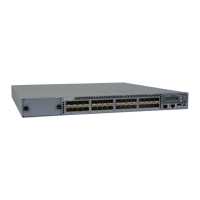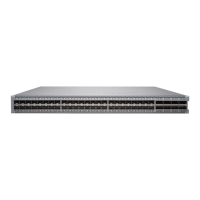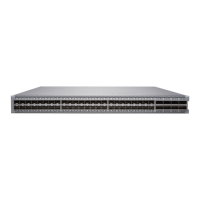Text and Syntax Conventions
ExamplesDescriptionConvention
■
A policy term is a named structure
that defines match conditions and
actions.
■
JUNOS System Basics Configuration
Guide
■
RFC 1997, BGP Communities
Attribute
■
Introduces important new terms.
■
Identifies book names.
■
Identifies RFC and Internet draft
titles.
Italic text like this
Configure the machine’s domain name:
[edit]
root@# set system domain-name
domain-name
Represents variables (options for which
you substitute a value) in commands or
configuration statements.
Italic text like this
■
To configure a stub area, include
the stub statement at the [edit
protocols ospf area area-id] hierarchy
level.
■
The console port is labeled
CONSOLE.
Represents names of configuration
statements, commands, files, and
directories; IP addresses; configuration
hierarchy levels; or labels on routing
platform components.
Plain text like this
stub <default-metric metric>;
Enclose optional keywords or variables.< > (angle brackets)
broadcast | multicast
(string1 | string2 | string3)
Indicates a choice between the mutually
exclusive keywords or variables on either
side of the symbol. The set of choices is
often enclosed in parentheses for clarity.
| (pipe symbol)
rsvp { # Required for dynamic MPLS only
Indicates a comment specified on the
same line as the configuration statement
to which it applies.
# (pound sign)
community name members [ community-ids
]
Enclose a variable for which you can
substitute one or more values.
[ ] (square brackets)
[edit]
routing-options {
static {
route default {
nexthop address;
retain;
}
}
}
Identify a level in the configuration
hierarchy.
Indention and braces ( { } )
Identifies a leaf statement at a
configuration hierarchy level.
; (semicolon)
J-Web GUI Conventions
■
In the Logical Interfaces box, select
All Interfaces.
■
To cancel the configuration, click
Cancel.
Represents J-Web graphical user
interface (GUI) items you click or select.
Bold text like this
xxii ■ Documentation Symbols Key
Complete Hardware Guide for EX4500 Ethernet Switches

